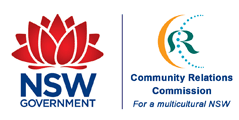New Australia
‘Australia wants, and will welcome, new healthy citizens who are determined to become good Australians’. Arthur Caldwell, Australian Minister for Immigration, 1945
After World War II, Europe was in chaos, Germany was crushed and the map of Europe was being carved up by the United States and the Soviet Union. Western Europe was supported by the United States while Eastern Europe was invaded by the Soviet Union. Migrants began streaming out of Eastern Europe to places like Australia and the United States to get away from the oppression in their homelands by the Soviet Union. The Cold War between the United States and the Soviet Union meant that nuclear war was a real threat and some people saw Australia as a safe place to live.
Between 1945 and 1965 more then two million migrants came to Australia. Most were assisted: the government paid most of their fare to get to Australia. In return they had to stay in Australia for at least two years and work in whatever jobs the government gave them. A number of migrants spent their first months in Australia living in migrant hostels while they tried to find themselves a home. Some found work in factories, others did the hard and dirty jobs in heavy industry. Skilled migrants found it hard to find work to suit their training and qualifications and had to accept what work was available. All migrants, especially those who did not speak English well, had to put up with prejudice. Thousands worked on the Snowy Mountains Hydroelectric Scheme that was commenced in 1949. Dams, power stations and tunnels were built so that the water from the Snowy River could be used to provide power and irrigation. Workers lived in camps and in newly built towns like Cabramurra doing hard and dangerous work.
The Colombo Plan
The Colombo Plan was started in 1951 by the Commonwealth of Nations so that developed countries of the Commonwealth could help the less developed ones. The Australian Government also promoted the Plan to improve its relationships with Asian countries and dispel negative impressions caused by the White Australia Policy. Later, many non-Commonwealth countries joined the Plan. The six countries supplying aid to 20 developing countries were Australia, New Zealand, Canada, Britain, Japan and the United States. The countries that received aid included Bangladesh, India, Indonesia, Laos, Malaysia, Pakistan and Thailand. The rich countries provided grants and loans to help the other countries develop their industry and agriculture. In 1983 Australia gave $59 million in aid to support the Colombo Plan. Students from developing countries were brought to Australia to study. When they had finished their studies they returned to use the skills and knowledge they had acquired to help their own people. In 1986 there were 3500 foreign students and trainees whose studies and living costs were paid for by the Australian government.

